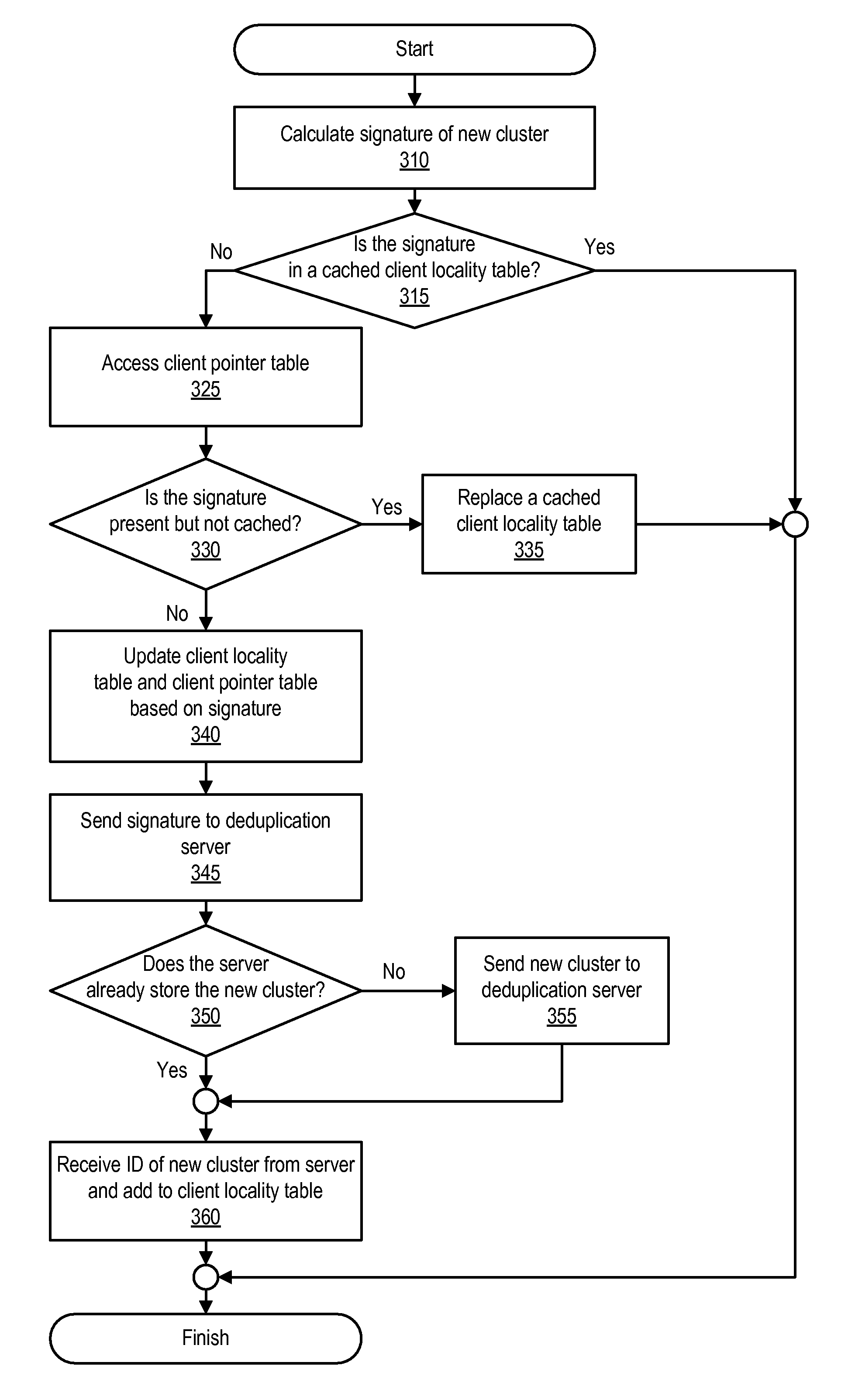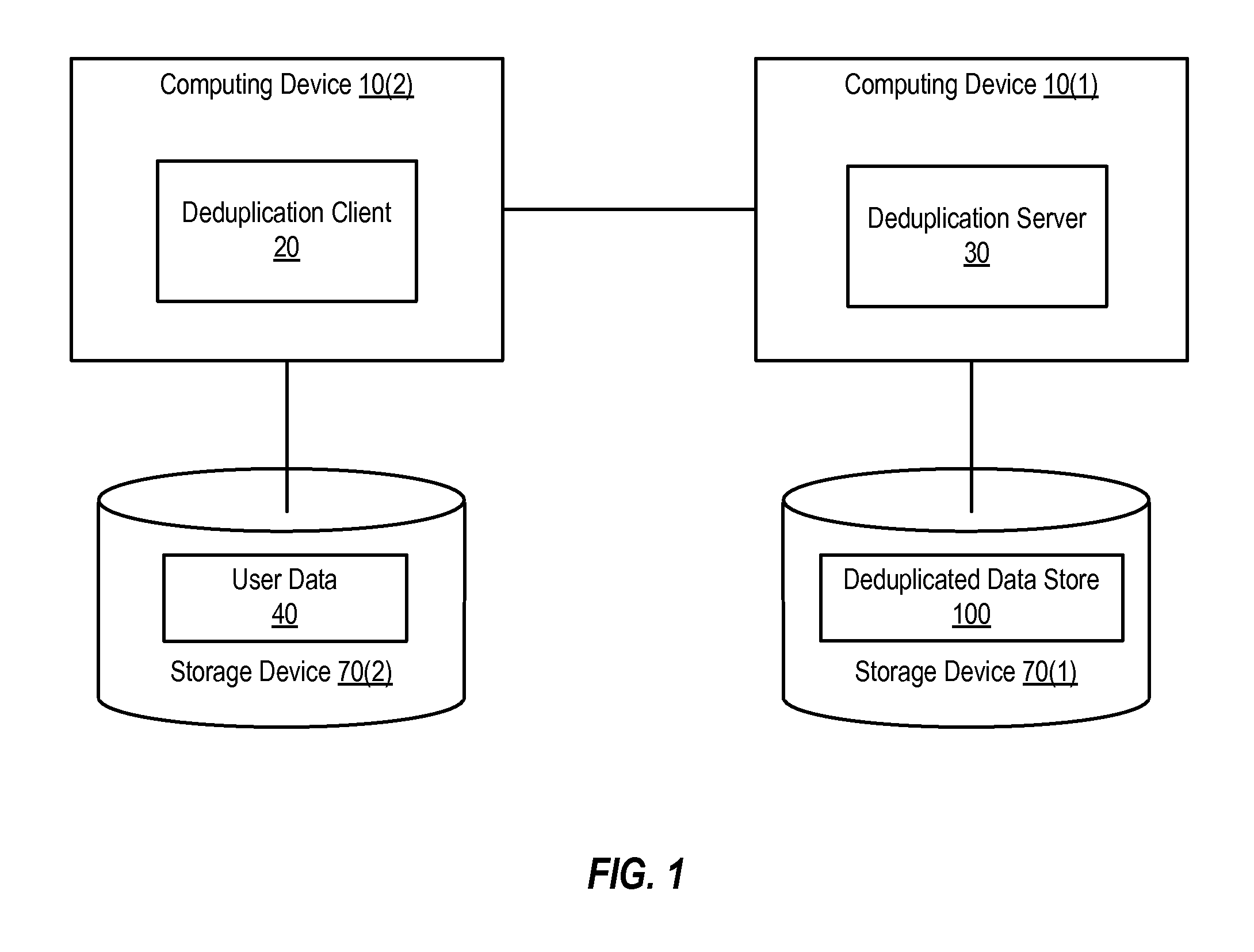Client side data deduplication
a data deduplication and client technology, applied in the field of storage systems, can solve problems such as significant disk head movement, system performance reduction, and signatures that cannot be held in computer memory on any but the most expensive computer systems
- Summary
- Abstract
- Description
- Claims
- Application Information
AI Technical Summary
Benefits of technology
Problems solved by technology
Method used
Image
Examples
Embodiment Construction
[0016]Data deduplication involves reducing the number of copies of the same data that are stored by a particular storage system. For example, data deduplication can be used to achieve single-instance storage, in which only a single copy of each unique item of data is maintained on a storage system. Data deduplication can be performed by generating a signature for each item of data, and then using that signature to detect whether a copy of that item of data has already been stored on the storage system, as well as to identify where the item of data is stored. When a deduplication client attempts to store another copy of the same item of data to the storage system, the data item's signature will be compared to the signatures of the already stored data items in order to detect whether a copy of the item of data is already stored.
[0017]A deduplication client can track the order in which that client adds (or attempts to add) unique data items, such as clusters, to the deduplication syste...
PUM
 Login to View More
Login to View More Abstract
Description
Claims
Application Information
 Login to View More
Login to View More - R&D
- Intellectual Property
- Life Sciences
- Materials
- Tech Scout
- Unparalleled Data Quality
- Higher Quality Content
- 60% Fewer Hallucinations
Browse by: Latest US Patents, China's latest patents, Technical Efficacy Thesaurus, Application Domain, Technology Topic, Popular Technical Reports.
© 2025 PatSnap. All rights reserved.Legal|Privacy policy|Modern Slavery Act Transparency Statement|Sitemap|About US| Contact US: help@patsnap.com



